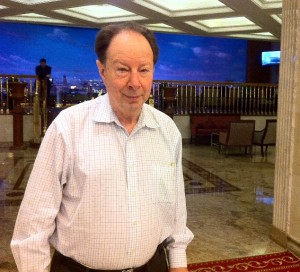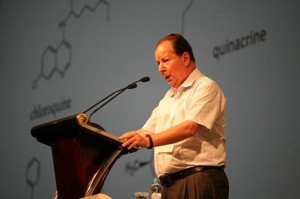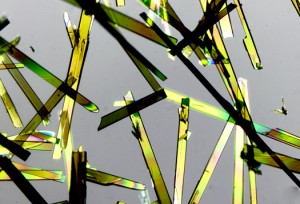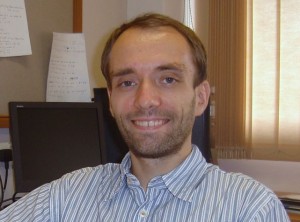Each time the cost of crude oil hits a new record, Dr. Andrey Khalimon feels there must be a better way to process fuels and produce energy. When energy demands soar – he thinks of a possible solution. On June 5 he will present a seminar on the importance of catalysis for the future development of the chemical industry and alternative petrochemical technologies. Come and hear how the activation of small molecules can solve the big problems.
Seminar Title: «FROM FUNDAMENTAL ORGANOMETALLIC CHEMISTRY TO APPLIED HOMOGENEOUS CATALYSIS»

Homogeneous catalysis. Image courtesy of Argonne National Laboratory
Dr. Andrey Khalimon
June 5, 2014
13.30 – 15.00
Sao-Paolo Auditorium, Brazil cluster Skolkovo School of Management
SEMINAR ABSTRACT:
Catalysis represents a key technology for the future development of the chemical industry. Catalysts enable products to be formed selectively and more efficiently by opening lower energy pathways. The majority of industrial catalytic processes are heterogeneous and often require harsh conditions and show poor selectivity.
Yet the energy costs, selectivity, and overall efficiency of catalytic reactions can be improved by the application of homogeneous catalysts. Homogeneous catalysts have certain advantages over heterogeneous catalysts because of their well-defined structure, better control of the reaction and hence a much improved selectivity. Because of these reasons, homogeneous catalysis has been applied widely in the last few decades, and it can be assumed that its market share will increase further significantly.
A large number of transition metal catalysts appear in the literature every day and applications of these compounds in chemical transformations are virtually limitless. This is due to the unique ability of transition metal complexes to activate inert chemical bonds and the possibility to tune homogeneous transition metal catalysts to meet the synthetic demands by changing their ligand framework.
This seminar will discuss the potential and challenges of organometallic chemistry in the further development and better understanding of important catalytic transformations related to the activation of small molecules and research in alternative petrochemical technologies, alternative carbon sources and renewable energies, which are highly emerging problems associated with the growth in the energy demands and increasing cost of fossil fuels.
The ability of homogeneous catalysis to offer potential solutions to these problems will be illustrated with examples of (1) activation of small molecules and catalysis by molybdenum silylamido agostic complexes, (2) the design of efficient photo Lewis acid generator and application of this concept to materials chemistry and photo-induced Lewis acid catalysis, and (3) utilization of carbon dioxide in the direct catalytic synthesis of acrylates.

Dr. Andrey Khalimon
SPEAKER INTRODUCTION:
Dr. Andrey Khalimon obtained his Diploma in Chemistry with Excellence degree in organometallic chemistry from the M. V. Lomonosov Moscow State University (MSU, Russia) in 2004. The same year, he joined the PhD program at MSU and was a visiting scholar at the chemistry departments of the University of Oxford (UK) and Royal Institute of Technology (Sweden) in 2005.
In 2006, following his supervisor, Dr. Georgii Nikonov, Andrey moved to Canada where he continued his studies in inorganic chemistry and catalysis at Brock University and completed his PhD degree in 2010.
Currently, Dr. Khalimon is a postdoctoral researcher at the Catalysis Research Laboratory (CaRLa, Germany) jointly managed by BASF and University of Heidelberg (Germany). His previous postdoctoral studies were done in the group of Dr. Warren Piers at the University of Calgary (Canada).
Dr. Khalimon’s research interests include organo-metallic chemistry, homogeneous catalysis, photo-chemistry and materials chemistry.
* The Skolkovo Institute of Science and Technology (Skoltech) is a private graduate research university in Skolkovo, Russia, a suburb of Moscow. Established in 2011 in collaboration with MIT, Skoltech educates global leaders in innovation, advance scientific knowledge, and foster new technologies to address critical issues facing Russia and the world. Applying international research and educational models, the university integrates the best Russian scientific traditions with twenty-first century entrepreneurship and innovation.
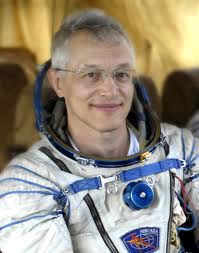
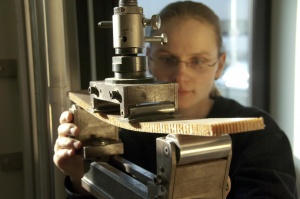
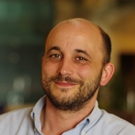
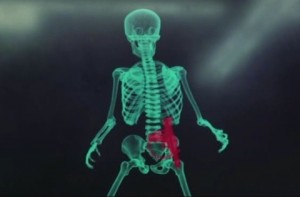
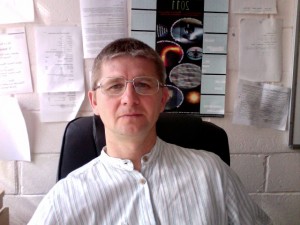
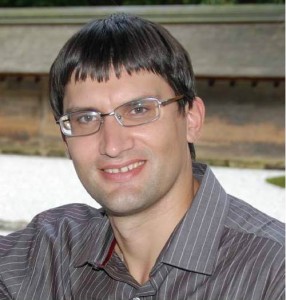 SPEAKER INTRODUCTION:
SPEAKER INTRODUCTION: